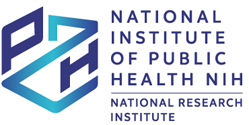RESEARCH PAPER
Obesity and associated risk factors among women of reproductive age in Morocco
1
Joint Research Unit in Nutrition and Food, CNESTEN, RDC-Nutrition AFRA/IAEA, Rabat-Kénitra, Morocco
2
Ministry of Health, Rabat, Morocco
3
Higher Institute of Nursing Professions and Health Techniques, Guelmim, Morocco
4
Higher Institute of Nursing Professions and Health Techniques, Laâyoune, Morocco
Submission date: 2025-06-04
Final revision date: 2025-08-22
Acceptance date: 2025-09-02
Online publication date: 2025-09-22
Publication date: 2025-10-07
Corresponding author
Kaoutar Benjeddou
Ibn Tofail University CNESTEN, Joint Research Unit in Nutrition and Food, RDCNutrition AFRA/IAEA, Rabat-Kénitra, Morocco
Ibn Tofail University CNESTEN, Joint Research Unit in Nutrition and Food, RDCNutrition AFRA/IAEA, Rabat-Kénitra, Morocco
Khalid El Kari
Ibn Tofail University CNESTEN, Joint Research Unit in Nutrition and Food, RDC-Nutrition AFRA/IAEA, Rabat-Kénitra, Morocco
Ibn Tofail University CNESTEN, Joint Research Unit in Nutrition and Food, RDC-Nutrition AFRA/IAEA, Rabat-Kénitra, Morocco
Rocz Panstw Zakl Hig 2025;76(2):177-187
KEYWORDS
TOPICS
ABSTRACT
Background: Obesity is a major global health concern growing in every region and affecting millions of people worldwide. It has become a pandemic. In 2022, 1 of 8 people in the world were living with obesity and more than half of the world’s population will be overweight or obese by 2035 leading to a total economic impact of US$ 4.32 trillion. Objective: This study aims to update data on the prevalence of overweight and obesity and the associated sociodemographic and economic factors in women of reproductive age (WRA) in Morocco. Material and Methods: A total of 2,172 women aged 18 to 49 years, representing all regions of Morocco, were enrolled. Socio-demographic and economic data as well as anthropometric measurements, specifically height, weight and waist circumference were collected. Results: Based on body mass index (BMI), 30.3% of women were classified as overweight and 27.8% as obese. However, based on specific predictive equation of body composition for Moroccan population, 61.6% of women showed excess of fat (mass fat ≥ 35%). Age and household-index were positively correlated to the prevalence of obesity and excess body fat, whereas education was inversely correlated to the prevalence of obesity and excess fat. In addition, urban area and being married seem to play a positive role in the increase of obesity rate. Conclusion: The prevalence of excess body fat is high among WRA in Morocco. This prevalence was impacted by age, education level, household-index, marital status and urban area. These factors highlight the complexity of addressing obesity and the need for comprehensive strategies that consider sociodemographic and economic factors.
Share
RELATED ARTICLE
We process personal data collected when visiting the website. The function of obtaining information about users and their behavior is carried out by voluntarily entered information in forms and saving cookies in end devices. Data, including cookies, are used to provide services, improve the user experience and to analyze the traffic in accordance with the Privacy policy. Data are also collected and processed by Google Analytics tool (more).
You can change cookies settings in your browser. Restricted use of cookies in the browser configuration may affect some functionalities of the website.
You can change cookies settings in your browser. Restricted use of cookies in the browser configuration may affect some functionalities of the website.



